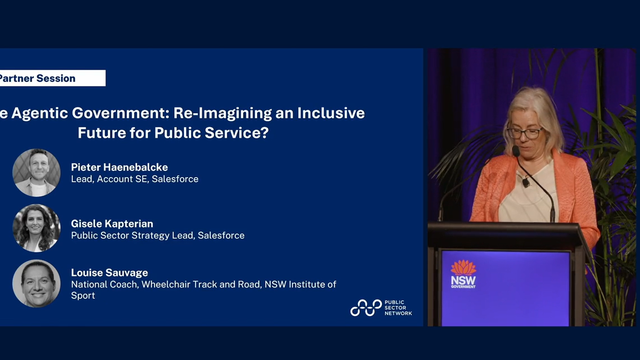Government Case Study: Victoria’s Digital Build – Transforming how state agencies plan, deliver, operate and maintain assets

Luke Belfield,
Director, Assets, Strategy and Projects,
Office of Projects Victoria
Digitising the Construction Industry

Like many industries, the fields of engineering and construction have been impacted by the pandemic, causing a number of pressures. Luke Belfield , the Director of Assets, Strategy and Projects at the Office of Projects Victoria (OPV), says these are mostly around “skill shortages, supply chain challenges and escalation pressures.” The OPV, which sits under the Victorian Department of Treasury and Finance (DTF), was created “to initiate high level transformational change within government projects across the whole of government.” One of the main areas of focus is digitisation because data generally suggests that both the construction and government sectors are lagging behind when it comes to digitising their processes. Governments across the country, together with “private industries and peak bodies” have recognised the need to change, and are thus “implementing improved practices and workflows to help better manage and communicate information, and ultimately to improve project delivery outcomes.”
“We currently have both a necessity and an opportunity to improve our practices and project delivery, to be more efficient and better informed, and to make better decisions using technology to help us where we can.”
Luke Belfield, Director, Assets, Strategy and Projects, Office of Projects Victoria
Digitisation is as relevant to the construction industry as it is to any other. For instance,
“when we build a physical asset we typically develop a lot of digital data in support of that project.”
This includes computer-generated 3D models and visualisations, as well data to determine the
“time, cost, human resources, and HSEQ – health, safety, environmental and quality requirements.”
This then produces secondary and amalgamated data assets like 4D visualisations, waste forecasts, labour and material costs and requirements, maintenance schedules and supply chain data. This provides a lot more data than would have been available previously, and in our current world, also assists with
“local content, social procurement and COVID recovery.”
It also allows for plans and disruptions to be factored in, along with
“the carbon footprint.”
Overall, digitisation
“allows us to think through the whole life of an asset.”
One of the real-world examples where digitisation is already assisting, is when it comes to local content. Most projects these days “get asked to provide a ‘steel local content’ request.” This traditionally is a lengthy and “intensive” process, because it needs to go through several channels, teams, contractors and clients, and at each stage it needs to be approved, fed into the appropriate systems and processes, and then actioned. It usually “takes weeks or months, and most of that time is actually spent on generating the data, not thinking about the local content requirements or how they fit into the supply chain.” To save time, money and effort, “an automatic status dashboard has been created to provide an almost accurate real-time status” of the request. It is linked to all the stakeholders and takes just minutes.
The Need for Reform

A departmental survey of DTF was conducted in early 2020 to ask “what’s stopping us being more connected? Overwhelmingly, the message from this survey was that government needs to do more to provide clear client requirements.” To achieve this, in March 2020 OPV launched “the Victorian Digital Asset Strategy guidance, to lift productivity.” All of this is part of the government’s “$144 billion infrastructure portfolio,” and in November 2020, OPV was funded to “implement the Digital Build program.” Since then, this has become “a transformative program of 9 projects to implement leading digital processes and methodologies in Victoria.” Of these 9 projects, they are divided into “digital assets,” that focus on the digital build policy like training and environmental pilots, and “offsite construction projects,” like legal reviews, asset standards and construction policies. Of the 9 projects, two are currently underway – one from each category. The first aims to “develop a digital build policy that can be applied across the whole Victorian government, no matter what infrastructure portfolio you’re part of,” whilst the other “looks to improve the productivity of Victorian major infrastructure projects by gauging current industry challenges and capabilities.” One of the goals is to do as much work as possible before getting to any construction site, so that the actual work at the site is seamless, and is “more about assembly than manufacturing.” A legal review will be conducted shortly to “define legal constraints” in order to move this forward by late 2021.
Aside from the 9 specific projects, the OPV identified “four different lenses” through which all projects should be seen, as they are “the most common and recurring features, affecting all projects.” Part of the Digital Build program is to address all these infrastructure issues and give them a digital capacity. The four lenses are: planning (ie: approval processes), procurement (ie: legal concerns, and making it cheaper and easier), project controls (ie: project performance vs time and cost), and design & engineering (ie: improving practices across the project lifecycle). The intention is for all of these “to talk to each other” in a digital build system, and for the system to produce “valuable and precise data that can be shared with other databases.” For instance, DTF has risk, tracking and performance data that needs to be incorporated into projects, along with “geospatial data, and a repository – organised and growing over time – for performance trends, benchmarking and lessons learned.” Each project can them build on the success of previous ones for the benefit of all projects. It is important that these digital practices are embedded in our current climate, in part because the pandemic has provided an opportunity that is unlikely to come about again.
Technology can assist because without it, there is a lot of “knowledge that is lost from teams” as projects get delivered, but this is the kind of data that can be “reused, like system work breakdowns, programs, designs, etc.” Through digitisation in the field of construction, “we can reduce documentation errors, improve efficiency, reduce rework, deliver projects faster and with less legal claims, and have improved efficiency through the operational phase of an asset. The opportunity is massive.”


































